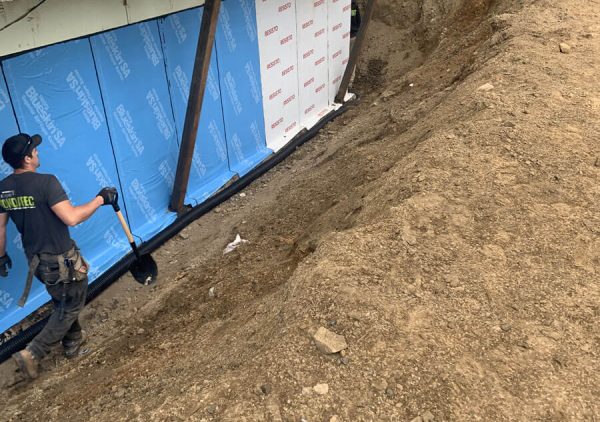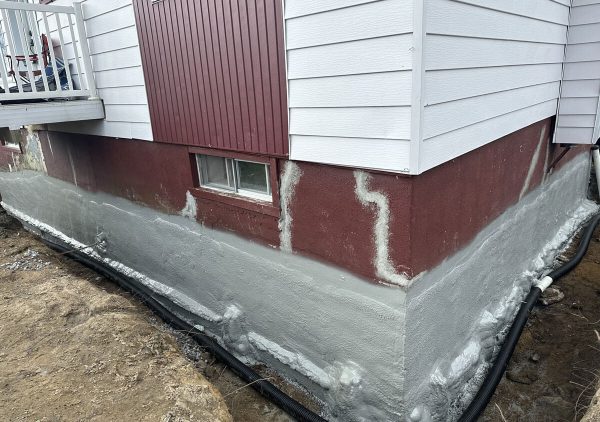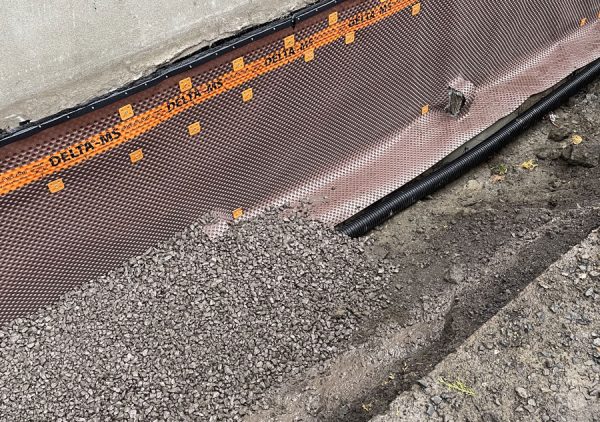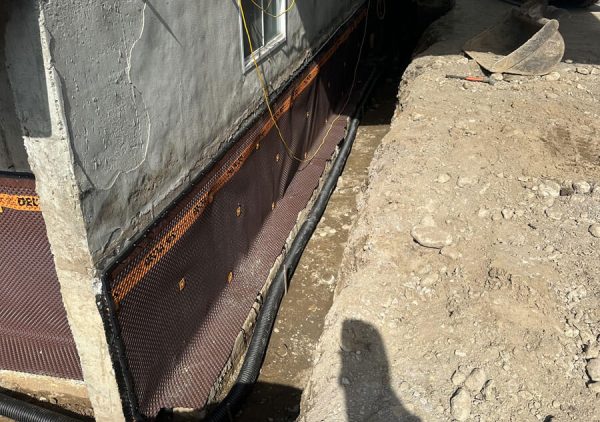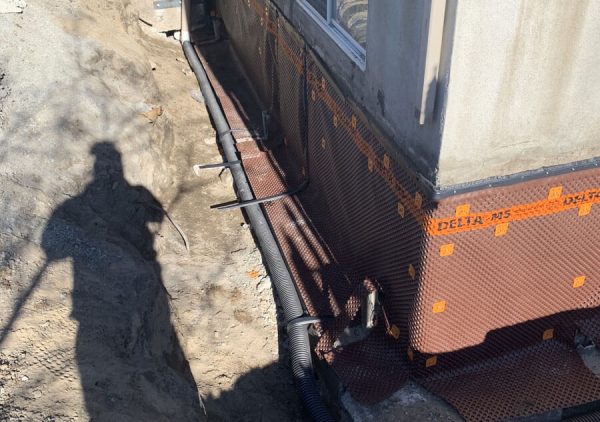French drain
Protect your foundations against water infiltration and moisture with Fondabec
Clay soils, iron-rich ochre, heavy rainfall, and freeze/thaw cycles make foundations particularly vulnerable to water infiltration in Quebec. A French drain, also known as a foundation drain, is a system designed to divert water away from foundations, thereby preventing cracks, infiltration, and subsidence.
At Fondabec, we operate throughout Quebec to install, inspect, and replace French drains using proven methods adapted to the conditions of your property.
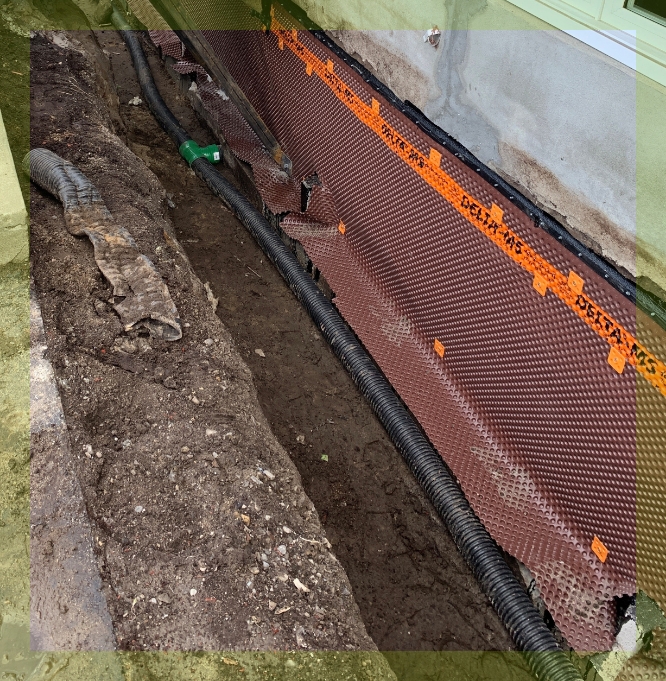
What is the purpose of a French drain?
A preventive and corrective role
- Persistent moisture in the basement
- Hydrostatic pressure on the foundation walls
- The formation of mold, concrete efflorescence, or fungi
- Cracks caused by freeze/thaw cycles
Types of French drains
- BNQ drain: this is the current standard recommended in Quebec. It is a perforated polyethylene drainage pipe (often 4 inches in diameter).
- Agricultural drain: commonly used in the 1980s and 1990s, this type of drain is often the cause of infiltration problems today. It crushes easily, is not surrounded by geotextile, and clogs quickly, especially in the presence of ferrous ochre.
- Terracotta drain: very common before 1970, this drain is made up of short sections of ceramic or clay glued end to end. Fragile and not watertight, these drains crack, shift over time, and allow fine particles to enter, which can clog them.
- Interior drain: this is a recommended solution when exterior access is very limited or even impossible (semi-detached house, restricted land, winter work). This system is installed inside the perimeter of the basement, under the concrete slab. It is connected to a sump pump and a collection basin to facilitate water drainage.
Signs that your French drain is clogged or ineffective
Inside the house
- Water seeping in at the bottom of walls or through cracks
- Persistent dampness or odors in the basement
- Mold or black spots appearing on walls
- Efflorescence (white spots or powder) on concrete or foundations
Outside the house
- Standing water around the foundation
- Localized subsidence or spongy soil near walls
- Wood rot
What causes a French drain to become clogged or ineffective?
Ferrous ochre:
enemy number one in Quebec
Very common in the clay soils of the Montreal area, ferrous ochre is an orange-colored sludge composed of iron and bacteria that forms when it comes into contact with groundwater. It can quickly clog a drain, even a new one, if an adequate filter membrane is not used.
Age or subsidence of the system
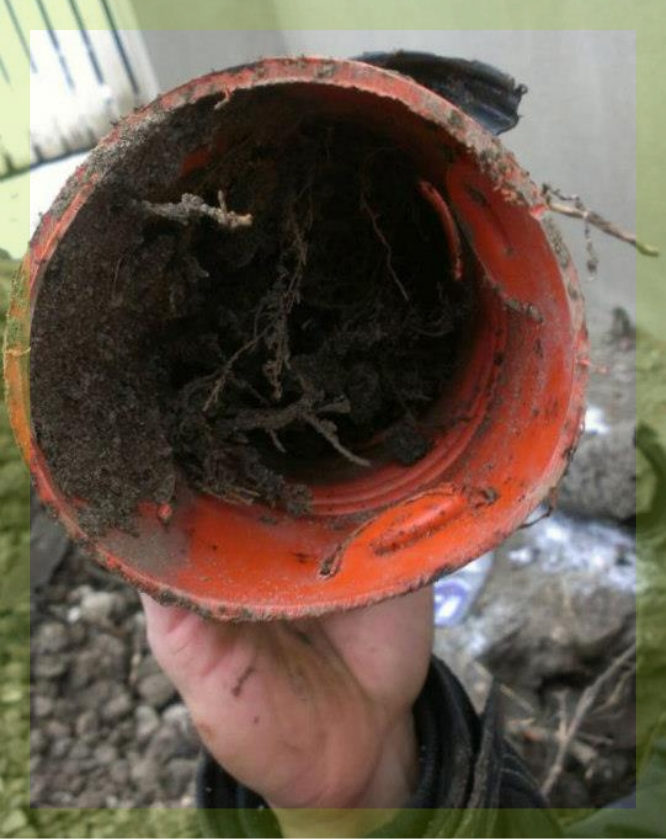
Accumulation of debris and fine particles
Heavy rains and snowmelt
No drainage system
Insufficient drainage slope
How Does a French drain replacement or installation work?
Exterior French drain installation or replacement
- Excavation down to the footing at the base of the foundation
- Cleaning the foundation and inspecting visible cracks
- Installing a BNQ‑compliant perforated drain on a bed of clean stone
- Adding a geotextile membrane to prevent fine particles from entering
- Connecting to the sump or drainage network (e.g. storm sewer)
- Backfilling with draining materials
- Final grading of the terrain and landscaping restoration if required
Interior French drain installation or replacement
- Cutting the basement’s concrete slab near the walls
- Excavating a trench to lay the perforated drain
- Adding a filtering geotextile and a bed of clean stone
- Connecting to a sump pump and collection basin
- Recasting the slab and finishing with concrete
Foundation Waterproofing: an essential complementary protection
Why Combine Drainage and Waterproofing?
- Capillary infiltration
- Hydrostatic pressure
- Premature ageing of the concrete
Waterproofing membrane applied to the foundation
- Creates a barrier against moisture and infiltration
- Protects the concrete from frost and degradation
- Efficiently directs water towards the drain
Comprehensive support with Fondabec

Assessment and Camera inspection
Each project starts with an on‑site evaluation, including a visual inspection and camera inspection of your French drain to determine the origin of the problem (blockages, cracks). We then perform an infiltration test to evaluate your drain’s ability to evacuate water.
Finally, our certified experts provide you with a clear report, outlining the solution to be implemented (partial repair or complete replacement depending on the condition of your installation) along with a detailed estimate.
Grants and Subsidies
Installing or replacing a French drain can be partly subsidised by government programmes (e.g. the federal Greener Homes grant, Rénoclimat in Quebec) and/or municipal subsidies (e.g. Renoplex in Montreal) to help you complete the work.
We can guide you through finding aid and subsidy programmes that suit your situation.
Need a French drain service?
For more than 20 years, Fondabec has been assisting homeowners in Greater Montreal and across Quebec with their French drain inspection, replacement or installation projects. Whether you’re in Laval, Longueuil, Terrebonne, the North Shore, the South Shore or elsewhere in the region, our team travels quickly to assess your situation and propose the most durable solution.
Fill out this form or call us today!
FAQ
How much does a French drain replacement cost?
Can the work be done in winter?
Yes, under certain conditions this work can be carried out at that time of year. Excavation is more complex, but our teams can intervene if the site is clear.
Can a drain be replaced without excavation?
How long do the works take?
Do you offer warranties?
For over 20 years, Fondabec has been assisting homeowners in Greater Montreal and throughout Quebec with their excavation projects.
- 957 Rue des Forges, Terrebonne, QC J6Y 0J9
- (514) 838-5379
- info@fondabec.ca
-
Monday to Saturday
7:00 am to 6:00 pm

